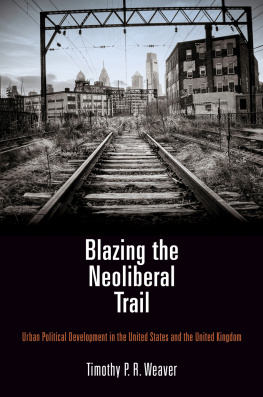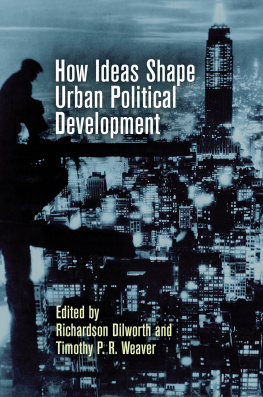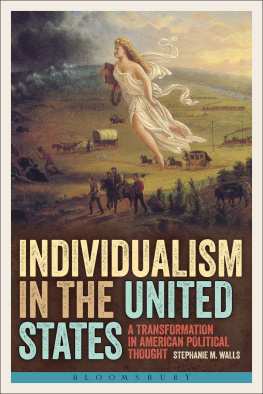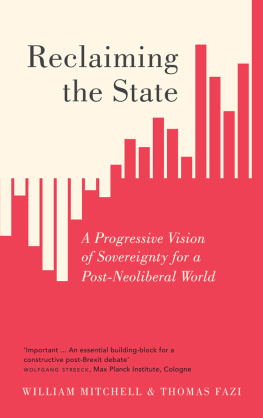The ideas of economists and political philosophers, both when they are right and when they are wrong, are more powerful than is commonly understood. Indeed the world is ruled by little else. Practical men, who believe themselves to be quite exempt from any intellectual influences, are usually the slaves of some defunct economist. Madmen in authority, who hear voices in the air, are distilling their frenzy from some academic scribbler of a few years back. I am sure that the power of vested interests is vastly exaggerated compared with the gradual encroachment of ideas.
John Maynard Keynes, The General Theory of Employment, Interest, and Money, 1936
As New Deal and Great Society liberalism and Keynesianism unraveled in the 1970s amid a stagflationary malaise, a set of neoliberal ideas came to dominate the political landscape in the United States and Britain. Those who came to power at the turn of the 1980s looked to their favored academic scribblers whose ideas, they hoped, would provide solutions where liberals informed by John Maynard Keynes and John Kenneth Galbraith had ostensibly failed. Nowhere was this shift more sharply felt than in cities. The most noted urban impact of the neoliberal turn was the reduction of aid from central government.corporations (UDCs). But while urban areas in the United Kingdom, such as London Docklands, were transformed along ideological lines from the top down, in American cities, such as Philadelphia, neoliberalization emerged as much from the quotidian practices of coalition politics as from the work of neoliberal ideologues.
By the mid-1990s, however, new Democrats and Labour Party politicians had taken control of the levers of power, heralding the prospect of a novel third way. This is most striking in Clintons Empowerment Zone/Enterprise Community program and with Blairs visions of an urban renaissance. At worst, these policies did little more than consolidate their predecessors policies; at best, they were inadequate attempts to ameliorate the deleterious effects of their macroeconomic policies, which accelerated deindustrialization, free trade, and growing inequality. Thus, while national urban policies of the 1980s were corollaries to neoliberal policy prescriptions in general, those of the mid-to-late 1990s reflected the partial accommodation of the putative center-left to those neoliberal ideas, which they clothed in progressive garb. In the realm of policy making, therefore, political development along neoliberal lines was ensured once the opportunity to forge an alternative course under Clinton and Blair was eschewed.
Over time, however, the enterprise zone coalition was steadily built, not least because federalism presented another avenue for enterprise zone proponents: the states. By the mid-1990s, more than 2,000 enterprise zone programs were in existence in forty states.
But the story told below is not simply a case of the top-down imposition of ideologically motivated neoliberal policies. Much work has already been done that examines the rise of the neoliberal project that either focuses purely on national or international politics or deals with the concept of neoliberalism abstractly. This book contributes directly to this endeavor.
In Philadelphia, I argue that neoliberal ideas interacted with the slow-moving processes of deindustrialization, racial change, and the logic of coalition building. This produced a sometimes reluctant turn to pro-business techniques as the policy options open to Democratic mayors appeared to constrict during the 1980s. Meanwhile, in London Docklands, that may not be evident at the national scale.
Thus, national urban policy in the United States and the United Kingdom, as well as urban political development in Philadelphia and London Docklands, provides political terrain for the three key contributions this book makes. First, it provides an account of the specific processes by which ideas take root among political elites and are rendered into policy proposals. Second, I show how the interaction of national and local institutional configurations and neoliberal ideas affects the pace and extent of change. Last, the urban-level cases illustrate how the battle to enhance the role of the market plays out in the urban trenches. There, the new political economy has produced enormous wealth for those in the financial and professional sectors while failing to provide adequate employment opportunities, living standards, or public services for the working class or the poor.
The remainder of this introductory chapter will lay out the logic of ideational political development and explain why, in certain circumstances, it offers a more compelling account of change than the principal alternative explanations. This leads to a brief discussion of neoliberalism and a preliminary assessment of the nature of the neoliberal turn. I will then discuss the implications of this study for the extant literature on urban politics. Finally, a short overview of the book will be provided.
The Logic of Ideational Political Development
Despite the recent growth of work on ideas and politics, there is little scholarly consensus as to the definition of ideas. Clearly, Bland and Cox are correct that ideas, by necessity, are products of cognition. However, their notion that ideas are inherently about causality seems overly restrictive, for this would seem to rule out normative or categorical beliefs. Therefore, for me, ideas are normative, categorical, or causal beliefs. What is of greater concern than matters of definition, however, is the issue of how ideas become politically relevant.
In order for ideas to propel political development, the following four conditions must be met. The first is simply that a given policy idea needs to be present. The second necessary condition is that the policy idea needs to be clearly expressed by politically relevant actors so that it structures the debate surrounding the policy domain. Third, the policy needs to be adopted by key political officials who possessor are likely to possessthe institutional tools of government. Fourth and finally, the ideationally induced policy needs to be introduced and institutionally embedded. An ideas success in terms of impact (although not necessarily the desired impact) would be achieved to the extent that policy changed and that it resisted rapid replacement. A central concern, however, is to consider the degree to which political institutions mediate ideationally defined policy innovations. In order to show convincingly that change is ideationally rather than materially driven, one must demonstrate that alternative explanations of a particular political development fail to explain the outcome in question or fail to capture as much of the shift as do ideational accounts.












